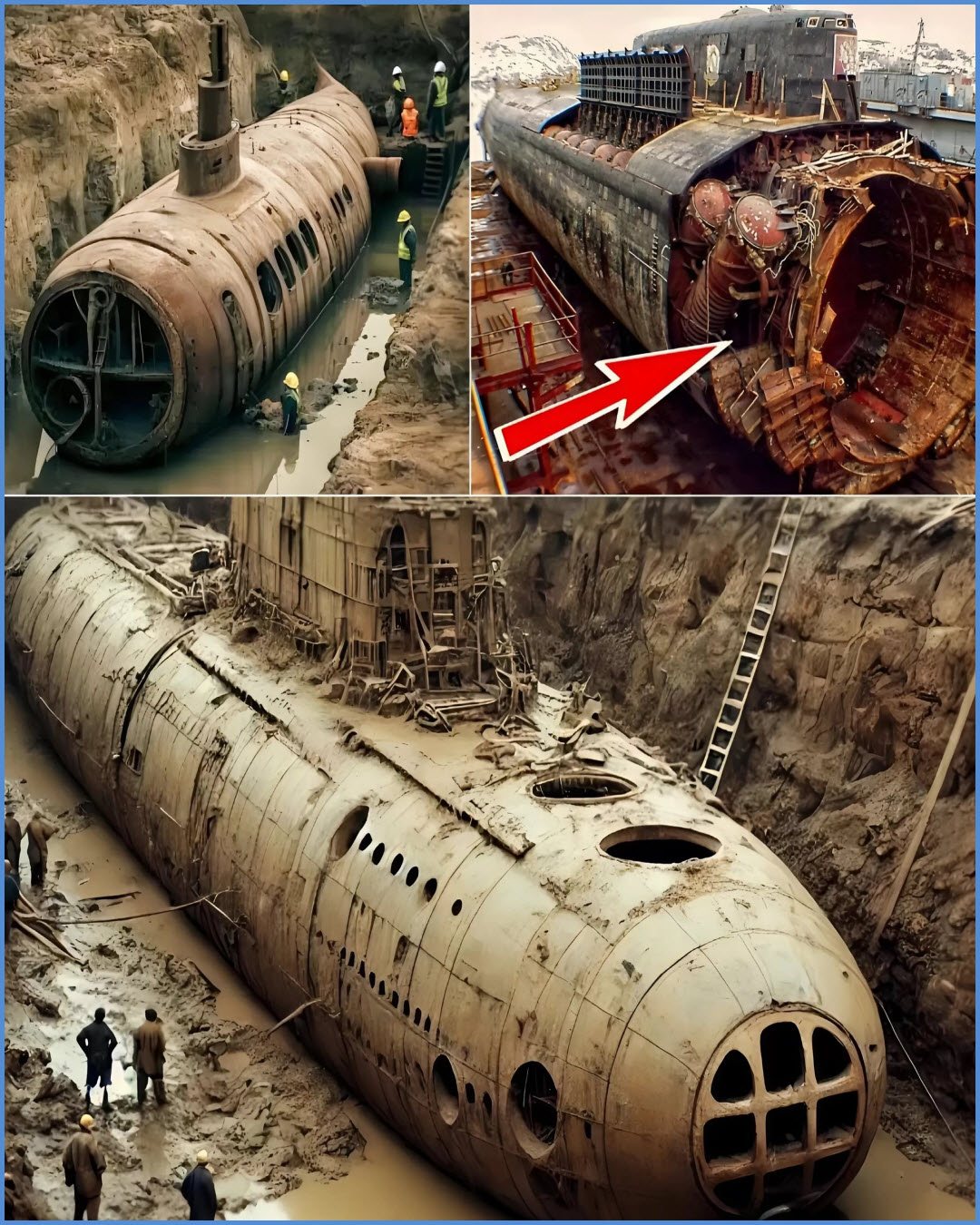Ancient Mystery Revealed: 3,000-Year-Old Submarine Found in Siberia

In a discovery that defies historical understanding, scientists exploring the frozen expanse of Siberia have uncovered a 3,000-year-old structure resembling a submarine. Perfectly preserved in layers of ice, this enigmatic object challenges everything we thought we knew about the technological capabilities of ancient civilizations. Its sleek design, precise construction, and mysterious origin have sparked intense debate among historians, engineers, and archaeologists alike. Could this be evidence of an advanced society lost to time—or a glimpse into a chapter of human history yet to be written?
The Discovery

The discovery was made during a geological survey deep within Siberia’s permafrost, where extreme cold preserved the object in near-perfect condition. Measuring several meters in length, the vessel-like structure exhibits streamlined contours and a metallic composition that has yet to be fully identified. Preliminary scans suggest a level of craftsmanship and symmetry unknown for its supposed age—dating back over 3,000 years, long before the dawn of modern engineering or metallurgy.
Researchers are currently analyzing samples from the site, employing radiocarbon dating, spectrographic testing, and advanced 3D imaging to determine the artifact’s age, material, and possible origin. Early results indicate alloys that do not correspond with known ancient manufacturing techniques, adding a layer of mystery to an already baffling find.
Theories and Debate

The discovery has fueled a spectrum of interpretations. Some experts propose that the object could have served as a ceremonial or ritual vessel, constructed to mimic aquatic creatures or celestial symbols revered by an unknown Siberian culture. Others entertain a far more provocative theory—that it might represent a remnant of a lost civilization with advanced technological knowledge, perhaps even preceding known ancient powers such as Mesopotamia or Egypt.
Engineers examining the structure point to its hydrodynamic design and compartment-like interior as features that appear purpose-built for movement through water—suggesting not only symbolic craftsmanship but functional intent. If the object was indeed operational, it would radically shift our timeline of technological evolution.
Of course, skeptics urge caution. They argue that natural geological formations or misunderstood artifacts can often appear engineered. Yet, the geometric precision and use of composite materials make this find difficult to dismiss as coincidence.
Implications for History
If proven authentic, the Siberian submarine could represent one of the most important archaeological discoveries of the modern era. It raises fundamental questions about the origins of human innovation: How did ancient societies acquire such advanced knowledge? Were there lost cultures whose achievements were erased by time and climate? Or does this artifact point to a deeper mystery—perhaps contact or influence from beyond Earth?
Conclusion
The 3,000-year-old submarine found in Siberia stands as one of history’s most perplexing enigmas. Whether the product of a forgotten civilization, a ceremonial masterpiece, or an artifact of unknown origin, it forces humanity to reconsider what we know about ancient technology and the progression of human ingenuity. As research continues under the harsh Siberian ice, the world waits for answers. Hidden within this frozen relic may lie evidence that the story of human history is far older—and far more mysterious—than we ever imagined.











